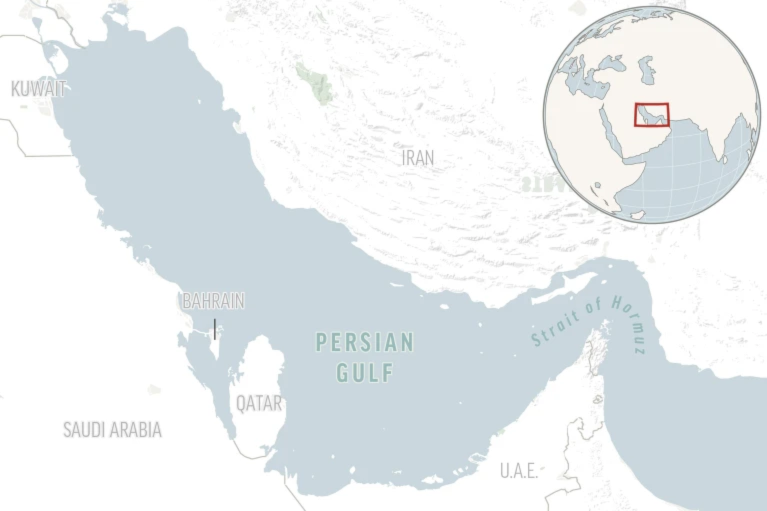Strait of Hormuz: shipping insurance rates surge amid war on Iran
Insurance costs for ships in the Strait of Hormuz rise over 60% as Ansar Allah attacks, electronic interference, and regional conflict escalate.
-

A locator map for the Persian Gulf and its surrounding countries (AP)
Insurance premiums for ships transiting the Strait of Hormuz have surged more than 60% since the start of “Israel's” war on Iran, as increased regional instability threatens one of the world’s most critical maritime chokepoints for crude oil, according to The Financial Times.
According to Marsh McLennan, the world’s largest insurance broker, the cost of hull and machinery insurance for vessels passing through the Strait, and the wider Gulf region, has risen from 0.125% to approximately 0.2% of a ship's value. For a $100 million vessel, this translates into a jump from $125,000 to $200,000.
Hull and machinery insurance provides protection against damage to the ship itself, distinct from cargo or third-party liabilities.
As reported by The Financial Times, “we’ve not yet seen a missile strike a ship in the Arabian Gulf,” said Marcus Baker, global head of marine and cargo insurance at Marsh McLennan, speaking to The Financial Times.
“But the market is signaling a heightened level of concern about the safety of commercial shipping in the region.” Baker added that rates could climb further if risks intensify.
The Strait of Hormuz, a narrow waterway between Iran and Oman that connects the Gulf to the Arabian Sea, handles about a fifth of global oil flows. Any disruptions to this corridor can have outsized effects on global trade and energy markets, according to The Financial Times.
Geopolitical risks mount from Houthi attacks to electronic interference
Vessels face a growing array of threats in the region, including the potential for attacks by Ansar Allah forces and increased electronic warfare that could impair navigation systems. Insurers and brokers have expressed concern over the possibility that Ansar Allah forces could expand their targeting beyond US-, UK-, and Israeli-flagged ships to include broader international shipping, according to The Financial Times.
As reported by The Financial Times, “the market is concerned about every vessel transiting the area,” Baker noted. The threat environment is driving some insurers to reassess coverage, with a few potentially exiting the market due to elevated risk, while others may view the volatility as a profitable opportunity.
On Monday, a collision between two oil tankers near the Strait of Hormuz intensified fears over maritime safety. Although the cause of the incident has not been confirmed, one of the tankers reportedly transmitted unusual signals about its position, prompting speculation about potential electronic interference, according to The Financial Times.
Such incidents heighten anxiety among insurers already on alert over the strategic implications of expanding regional warfare.
Baker noted that war insurance remains a high-stakes segment of the industry, “It tends to be either you lose everything or make a fortune. And many fortunes have been made by underwriters willing to take a risk.”
As reported by The Financial Times, while hull and machinery insurance has seen an immediate price spike, insurance rates for cargo, including oil, are also expected to rise. However, brokers said the cargo insurance market has been slower to respond to the escalating threat environment.
As conflict in the Middle East deepens and threats to maritime security multiply, underwriters and shippers alike are bracing for a volatile season in one of the world’s most sensitive shipping lanes.

 3 Min Read
3 Min Read








